Ep. 112: AKIRA vol. 5, by Katsuhiro Otomo
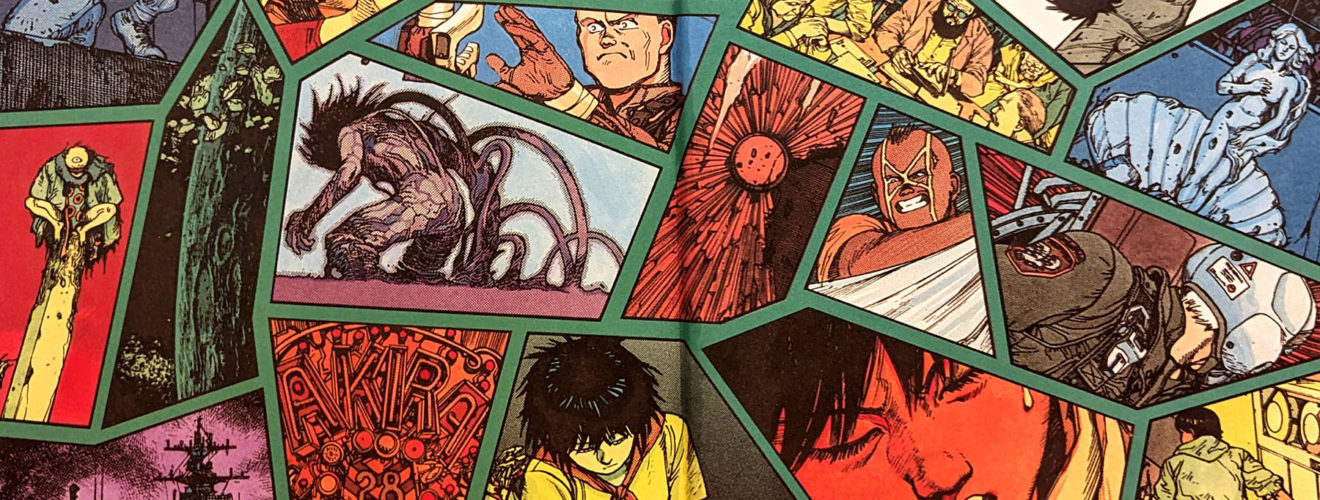
We’re almost at the end of Mangasplaining Season Four, so it’s time to read the next volume of AKIRA by Katsuhiro Otomo! Will the title that introduced Chip Zdarsky to manga continue to be his fav? Deb Aoki hosts, and David Brothers and Christopher Woodrow-Butcher join in on this merry tour through the biggest and most intense volume of the series.
Powered by RedCircle
Listen and Subscribe to the Podcast:
Google | Apple | Stitcher | RedCircle | Amazon | Radio Public | PocketCast | Spotify
Also, please check out our newsletter and digital publishing endeavour, Mangasplaining Extra!
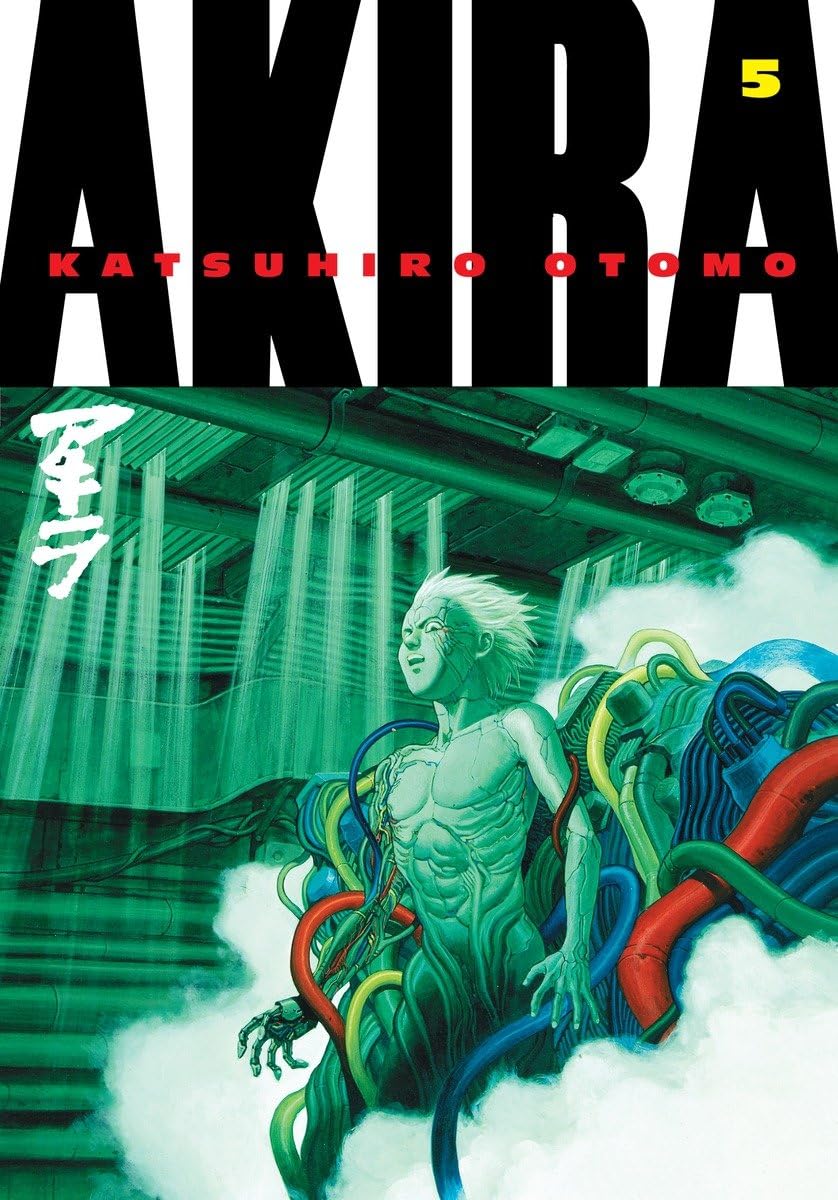
AKIRA Vol. 5
by Katsuhiro Otomo
Translation and English-language adaptation: Yoko Umezawa, Linda M. York, Jo Duffy
Translation adaptation: Stephen Paul and Ko Ransom
Lettering: Scott O. Brown and Evan Hayden
Editing: Lauren Scanlan
Kodansha Comics edition cover design by Phil Balsman
Published by Kodansha. Available in print.
Audio editing by David Brothers. Show notes by Christopher Woodrow-Butcher and Deb Aoki
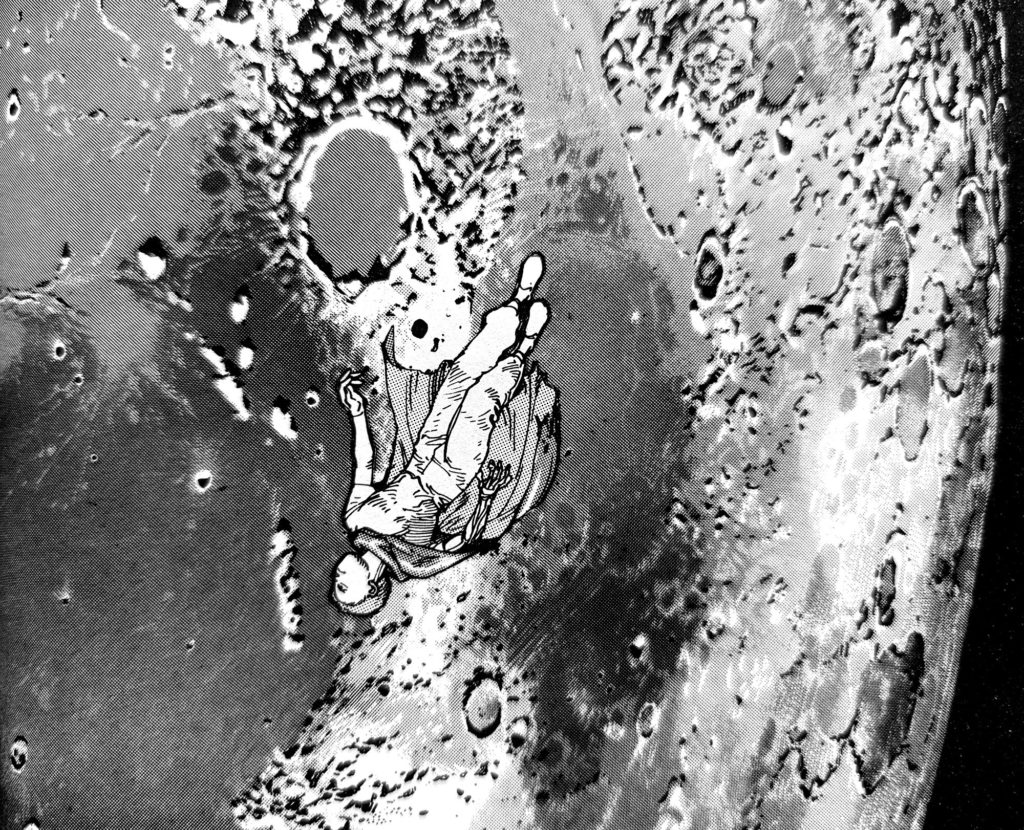
BEFORE WE GET STARTED
Katsuhiro Otomo’s AKIRA is the very first manga we read on Mangasplaining, to introduce Chip to the wide wild wonders of manga. We’re reading the whole series through from start to finish, with a new volume at the end of every season. We’ve covered a LOT on Katsuhiro Otomo and AKIRA here in the show notes and on the podcast, so let’s try not to repeat ourselves and have you go check out the show notes for the first four volumes if you want to know more about this series and author.
AKIRA by Katsuhiro Otomo Volume 1 on Mangasplaining
AKIRA by Katsuhiro Otomo Volume 2 on Mangasplaining
AKIRA by Katsuhiro Otomo Volume 3 on Mangasplaining
AKIRA by Katsuhiro Otomo Volume 4 on Mangasplaining
As we mentioned in the previous episodes where we discussed AKIRA, this manga series has one of the most complicated and lengthy publishing histories of any English language manga release. There are three main English language-editions: 1) the first English editions published in 1988 featuring colored artwork from Steve Oliff, published by Marvel/Epic (and collected as graphic novels by Graphitti Designs); 2) the first black and white edition, also “flipped” to read in the North American reading order, published by Dark Horse Comics in 2000 (a version of this edition was published by Kodansha as well); and 3) the most recent edition, the first ‘unflipped’ (Japanese reading order) edition in black and white and with a new translation, published by Kodansha exclusively as part of the AKIRA 35th Anniversary Edition Box Set in 2017. We should disclose also that Kodansha provided the team with this box set shortly after beginning coverage of this title, and that Christopher and Deb both work professionally with Kodansha.
We talk about all of these volumes more-or-less interchangeably, and also reference the AKIRA animated film (1986) quite a bit as well, as many events from the manga play out in the film slightly differently.
Finally, there’s no digital edition of AKIRA, so all of the example images (republished here under fair use) are photographed, rather than screenshot or scanned, so they’re a little janky at times. Apologies in advance.
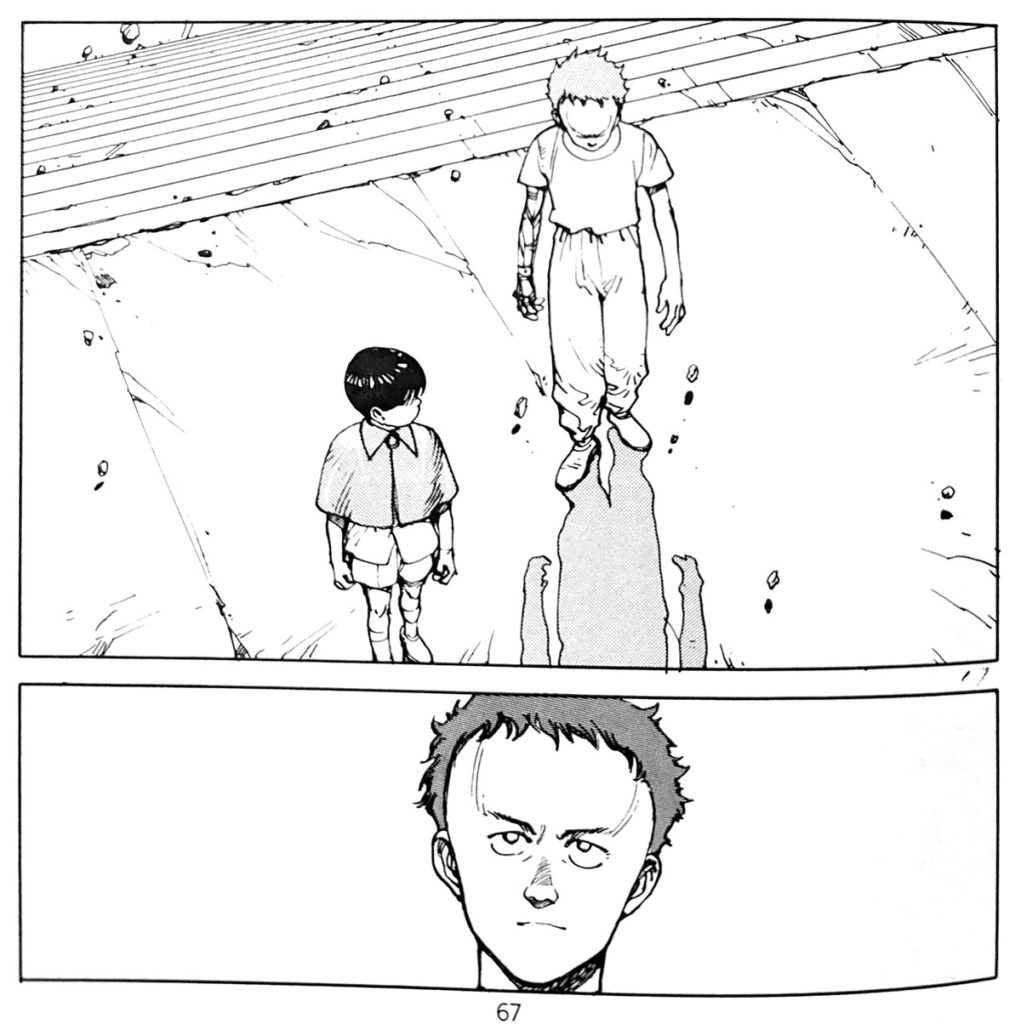
ABOUT AKIRA VOL. 5
Let’s kick things off with the description for this book from Kodansha:
IN THE 21ST CENTURY, the once glittering Neo-Tokyo lies in ruin, leveled in minutes by the infinite power of the child psychic Akira. From the flooded wasteland of rubble and anarchy rises the Great Tokyo Empire, populated by a ragtag army of zealots and crazies who worship and fear Akira ad his mad prime minister, Tetsuo, and angry teen with immense powers of his own— and equally immense, twisted ambitions. The world at large is not taking the threat lying down, and the military strength of the planet is massing to take on the empire, but will technology’s most advanced weaponry be enough to destroy Akira? And are Tetsuo’s rapidly growing paranormal abilities a potentially greater threat?
A mind-blowing epic, Akira is a sweeping graphic-novel tour de force of awe-inspiring vision and gut-wrenching intensity— and the inspiration for the brilliant Akira animated film. Creator Katsuhiro Otomo has influenced a generation of graphic novelists and animators and is universally acknowledged as a storyteller of extraordinary skill, standing alongside the finest writers and directors of science fiction.
-Kodansha
00:40 End of Season Four! Whoo! Without belabouring the point too much, we began Season Four of Mangasplaining on January 20th, 2023 with Chainsaw Man, and are going to be ending it March 5th, 2024. That’s a long time to wait for 27 episodes, roughly an episode every two weeks.
First off: Thanks for reading this, and sticking with us, that’s super cool. Secondly: Sorry for the long delays, life’s been great and weird and tough and distracting, but we’re all still really thrilled to be doing the podcast, and all the stuff that’s spun out of it too.
So now let’s dig into AKIRA volume 5 with something we can all agree with: Shitty MC’s suck.
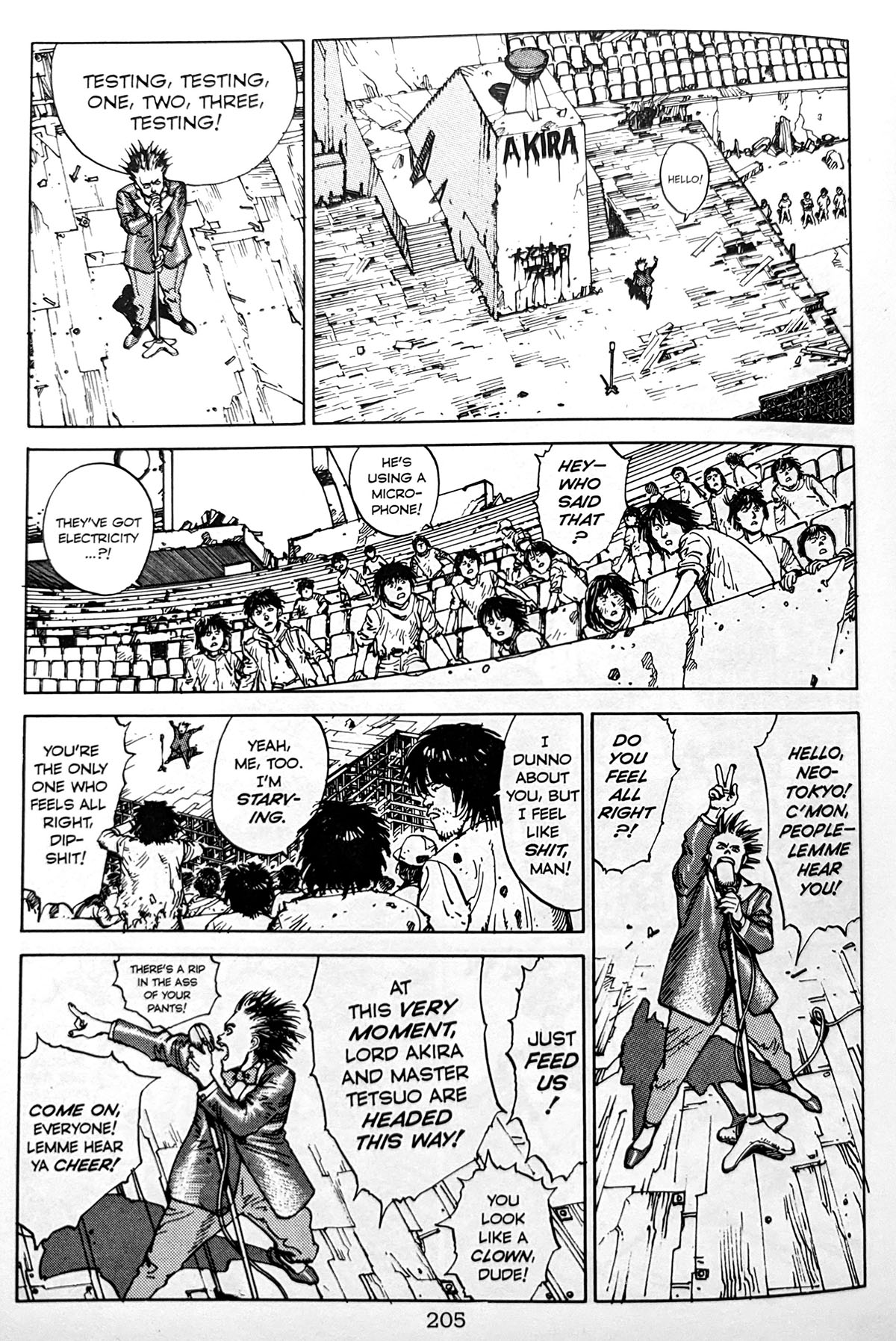
02:10 Volume 5 of AKIRA by Katsuhiro Otomo kicks off with a two-page spread of an aircraft carrier docked off the coast of Japan. This signals that the Americans have fully arrived, and the playing field for what’s going on in Tokyo with Tetsuo, Kei, Kaneda and the gang is about to change radically.
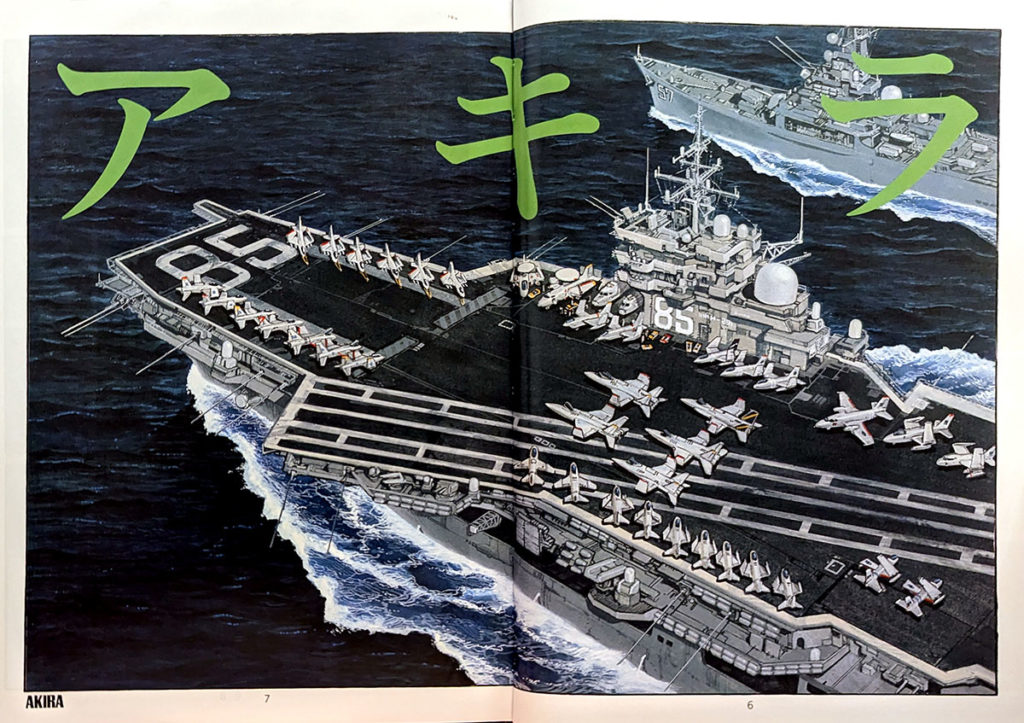
04:10 The Chapter Breaks! We’ve talked about this a little bit before, but one of the things that’s so special about the AKIRA collections is that they’ve been re-edited to be read as one continuous volume. When this story was originally serialized in Kodansha’s Young manga magazine, each installment would contain between 16 and 20 pages, containing between two and four ‘scenes’ (depending on length) from the story. Sometimes they’d be really satisfying chunks! Sometimes it was whatever Otomo and the crew could get done in time.
Each of the chapters of the book would have a title-page, which could be anything from a character portrait, to a scene from that week’s chapter, to a cool illustration. For the collected AKIRA volumes, these chapter pages would be handled in one of two different ways. Mostly, they were just very cool stand-alone illustrations that related in some way to that week’s chapter, and so they were cut from the collected editions.
For example, here’s pages 22 and 23 from AKIRA volume 5. The right page would have been the last page of the first chapter of this book, and the left page would have been the first page of the next chapter. You can kind of tell because the same moment gets two distinct “beats.”
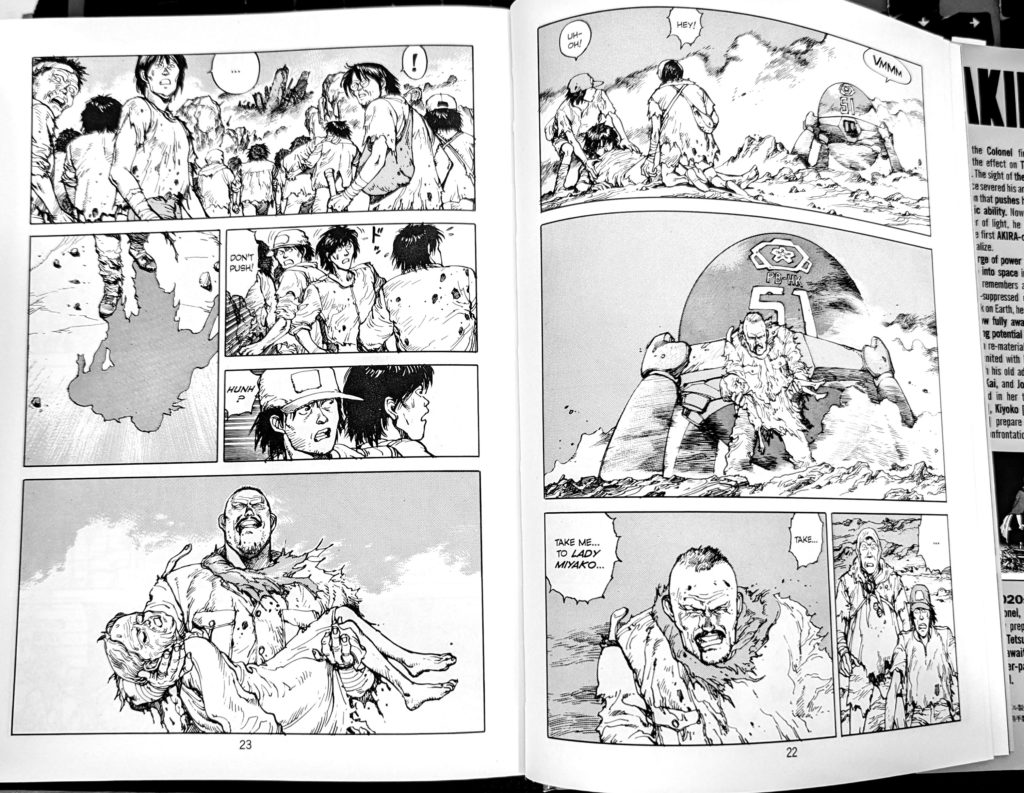
In between it, this title page would’ve been inserted for the serialization:
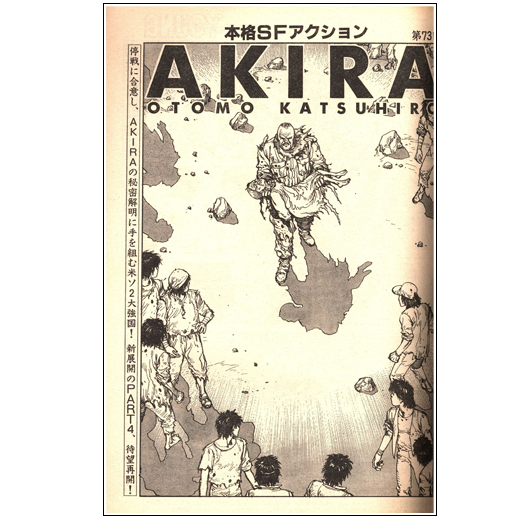
You can see why it was removed though, because it would’ve meant hitting the same story beat three times.
Sometimes though, those illustrations WOULD be directly incorporated into the graphic novel edition. The only example I could find in this volume is the opening double page spread of the aircraft carrier that we mention. Here’s what it looked like in the serialization back in 1986:
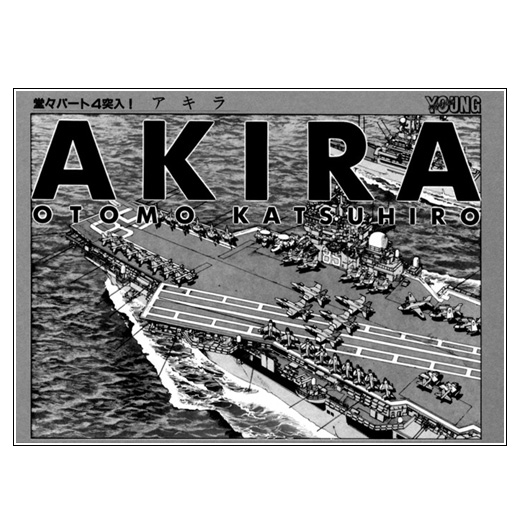
And that was painted over to make the spread we included above…!
Fret not, completists. All of these cut-content pages would eventually be collected in the art book AKIRA Club, sans the additional writing, logos, and other accoutrement. Here’s what that chapter page up top looks like in AKIRA Club.
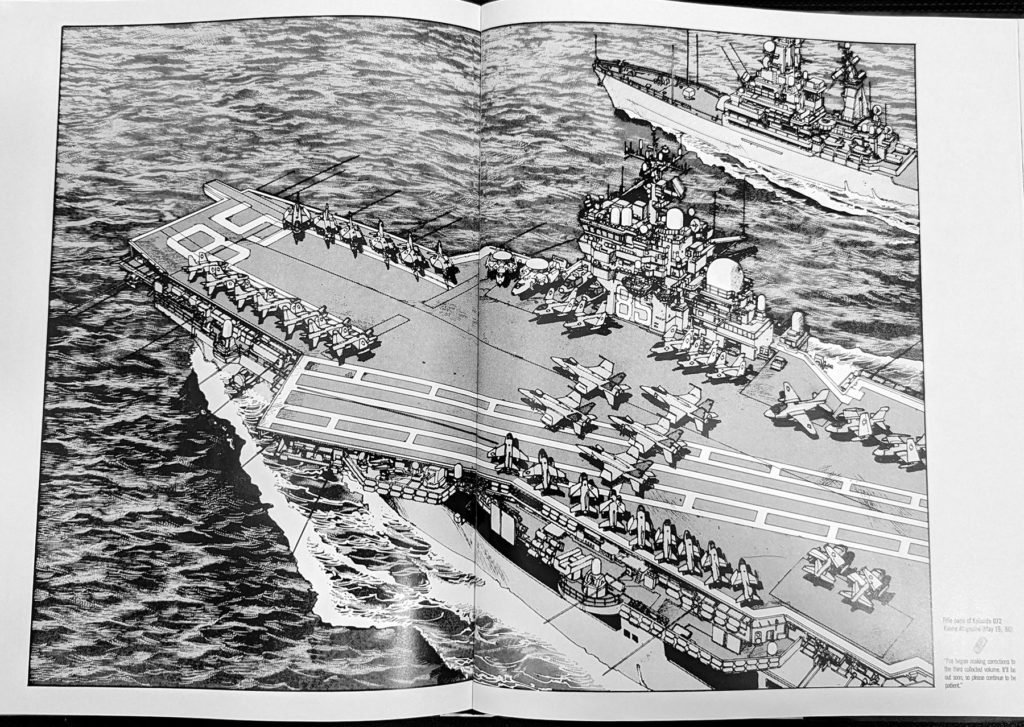
Finally, it’s worth noting that when Marvel/Epic published AKIRA in color in English, they would use these chapter pages as the covers for their single-issues. Coincidentally (honestly, I didn’t go looking until later), that page above WAS used as a cover. Here’s what it looked like in the Marvel/Epic edition, with Steve Oliff on colors.
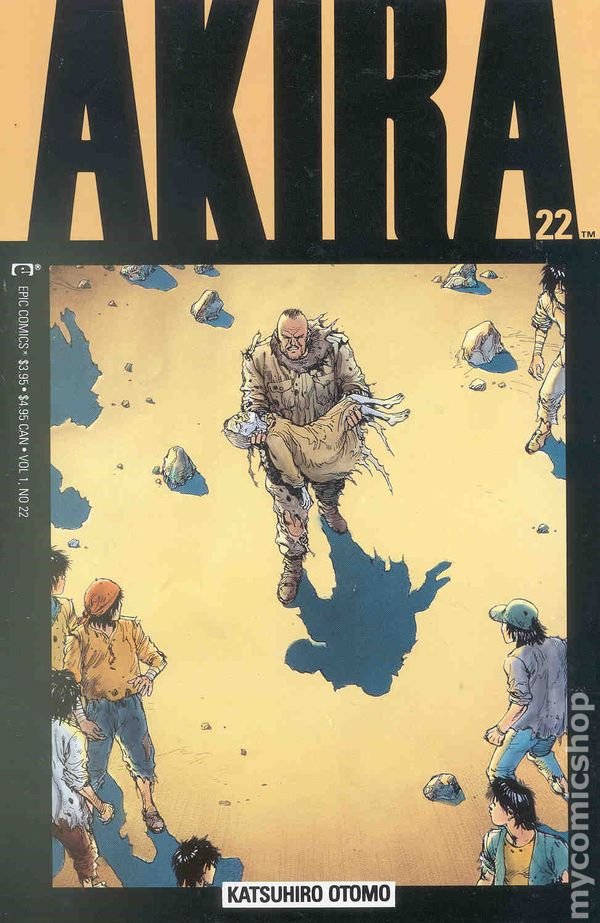
I’d like to wrap this up by thanking the following two sites for helping me research and learn about these, they’re fabulous repositories of material on all things AKIRA and Katsuhiro Otomo, really great old-school websites that I wish there were more of out there:
Chronotomo – http://chronotomo.aaandnn.com/
Exploring AKIRA: https://exploringakira.wordpress.com/
05:00 I mention Chip’s Public Domain comic book (Eisner-winning!) here briefly, and just to explain, Chip is serializing that comic on his Substack newsletter (where Mangasplaining Extra is also serializing manga like Search and Destroy and Wandering Cat’s Cage and Okinawa and…). Chip and I were talking a little before the serialization started about how to best serialize work online. His advice was to give people a satisfying chunk of comics at a slower pace, rather than doing something like a page a day (or a week!). The idea being, the story sticks with you better if a scene has a beginning, middle and end.
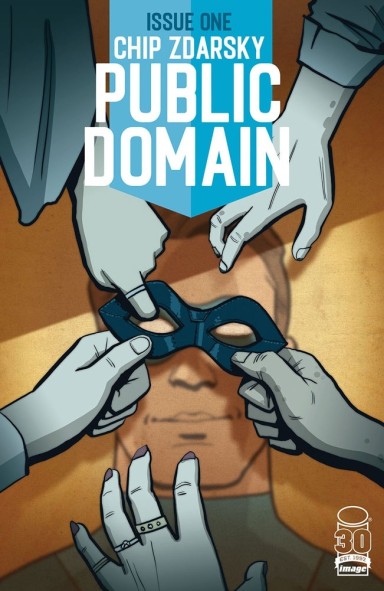
Otomo-sensei did this same thing with AKIRA, with serializations consisting of completed ‘scenes’, even when the serializations got real, real short. You can check Chronotomo and see how the chapter breaks map onto your favorite volumes.
8:36 Deb points out that the jokes in this volume are pretty funny. She specifically likes the bit where Joker just knocks motormouth Kaneda out for a little while.
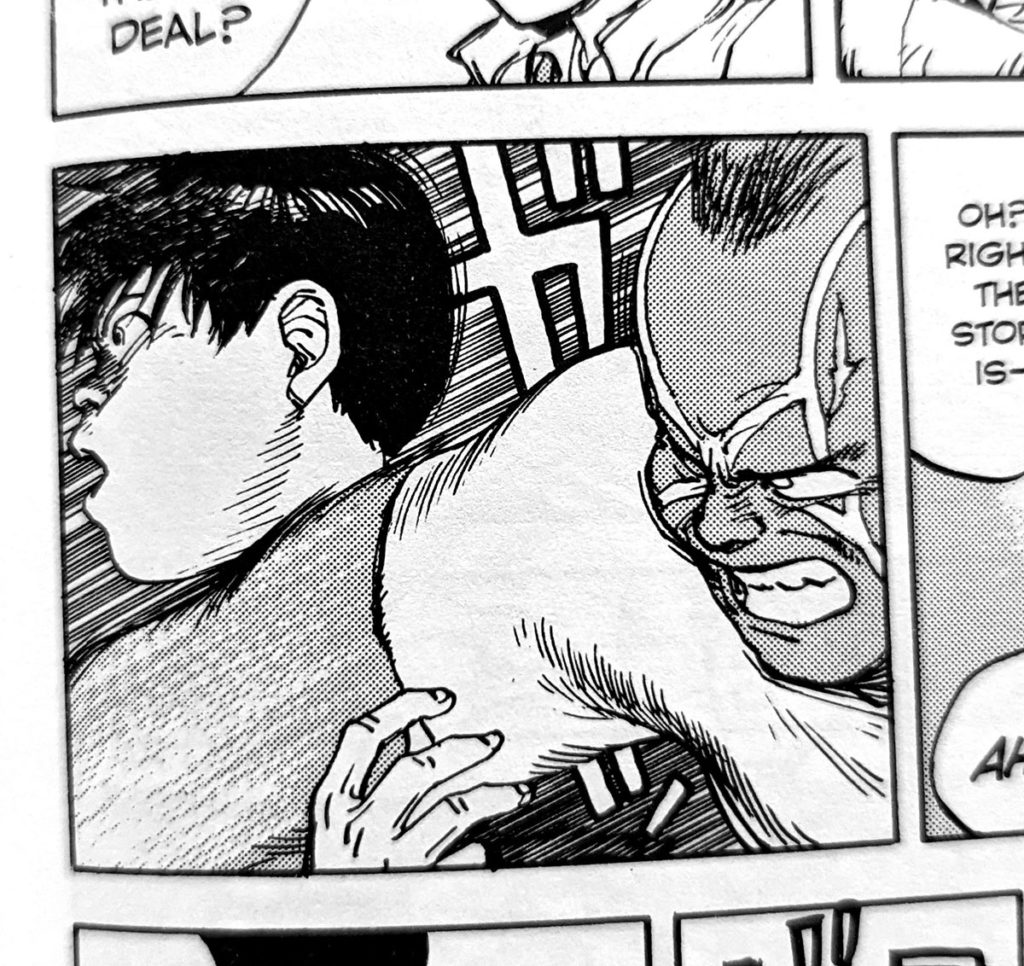
8:50 Deb also appreciated the character Kai, bringing a lot of humanity to this volume and acting as a good counterpart to shonen manga-action-hero Kaneda. This bit, where he says a little prayer for dead bodies in the subway, is a great character moment.
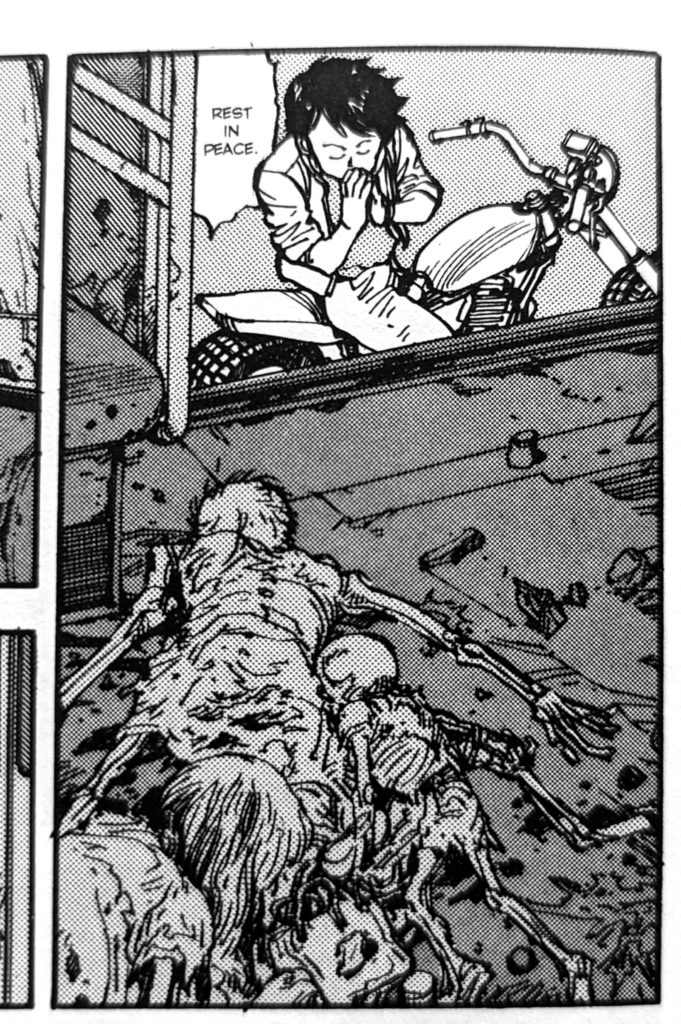
This bait-and-switch hug between Kaneda and Kai (not… Kei) is also really good.
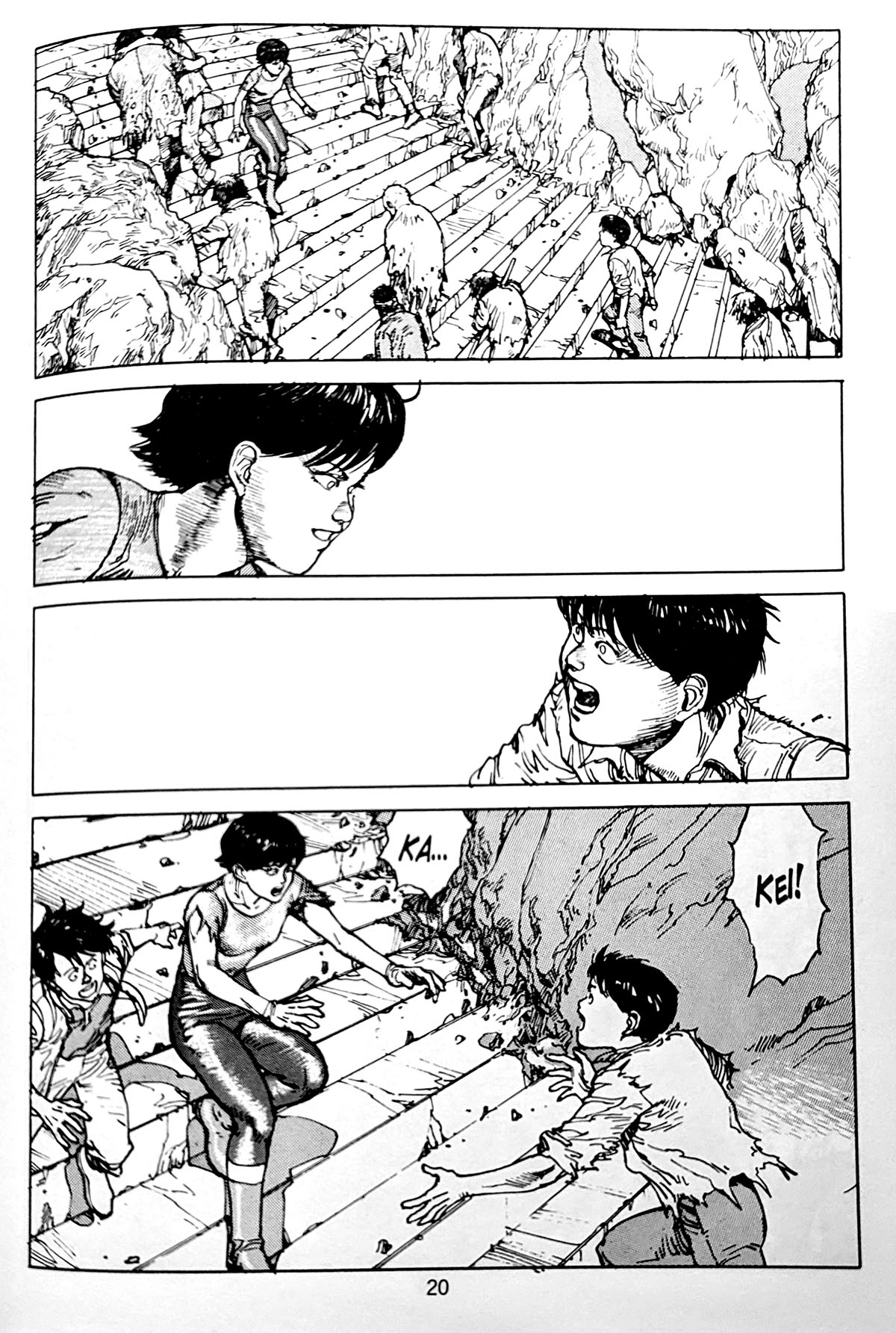
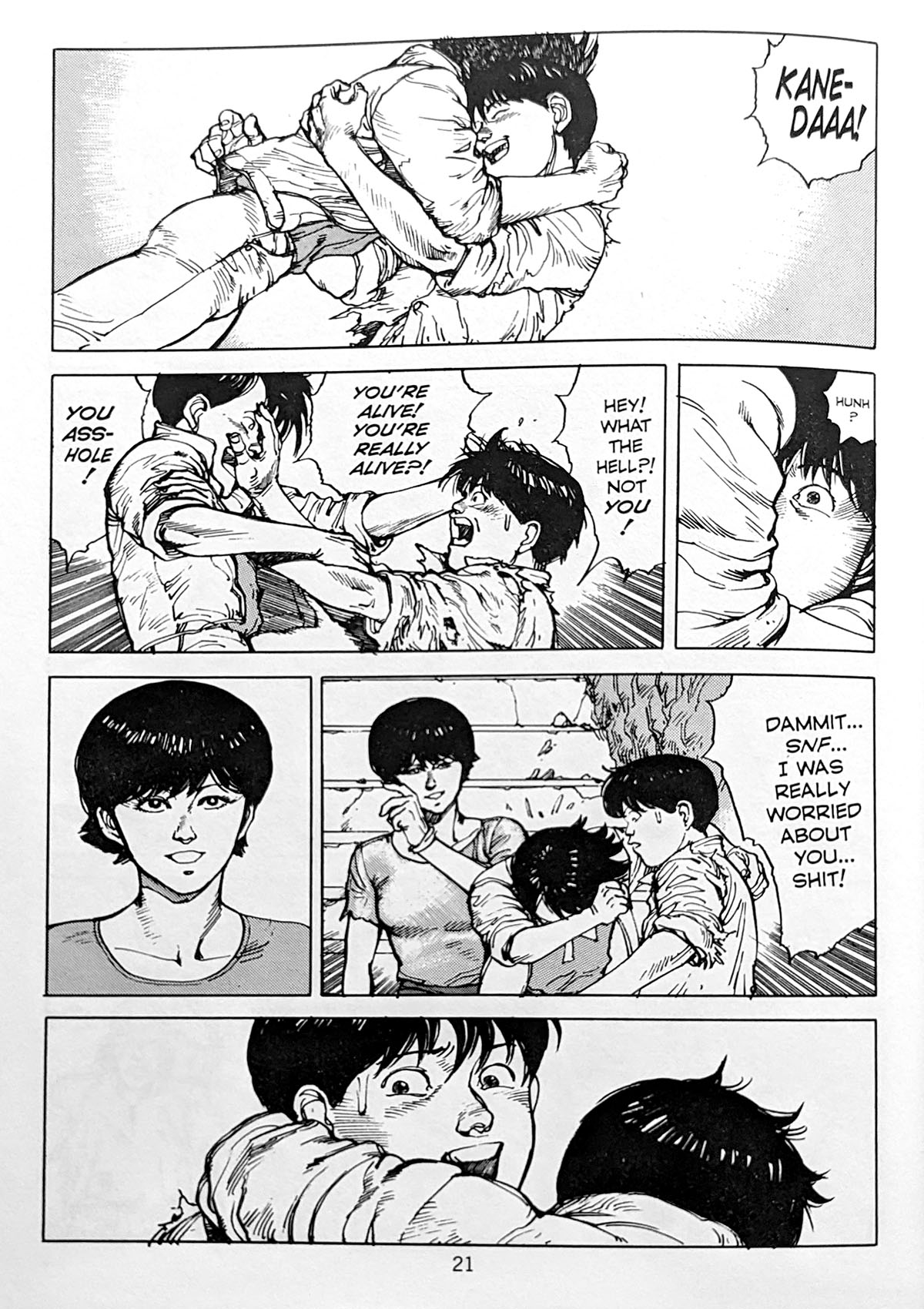
13:23 Somehow Deb missed the title pages. Lol. Just for the record, here’s what the books are titled:
Volume 1: Tetsuo
Volume 2: Akira I
Volume 3: Akira II
Volume 4: Kei
Volume 5: Kei II
Volume 6: Kaneda
15:33 So, was the break between volume 4 and 5 really long? Actually… not really? The last chapter of AKIRA volume 4 was released in the April 21, 1986 issue of Young. After that, the first chapter of this volume was released a month later, in the May 19, 1986 issue. So, I guess Otomo just decided to recapitulate the entire series to that point as a creative choice? Fascinating.
Now that said, AKIRA vol. 5 IS really interesting as it looks like the serialization of AKIRA really slowed down during this book. Whereas the story was coming out roughly twice-per-month for the first half in 1986, the series dropped down to releasing only five short chapters (~17 pages each) in the year 1987, three short chapters in 1988, and then back to roughly twice-per-month in 1989 and through the end of the serialization in 1990 with Volume 6.
18:00 Here’s the trailer for that movie David mentions. Weirdly, I had no idea this was coming out and so I saw a preview of it in Taiwan with Mandarin dubbing. It was confusing, context is king.
20:15 As Deb mentions, the Colonel is a total daddy thirst trap this volume. Sigh.
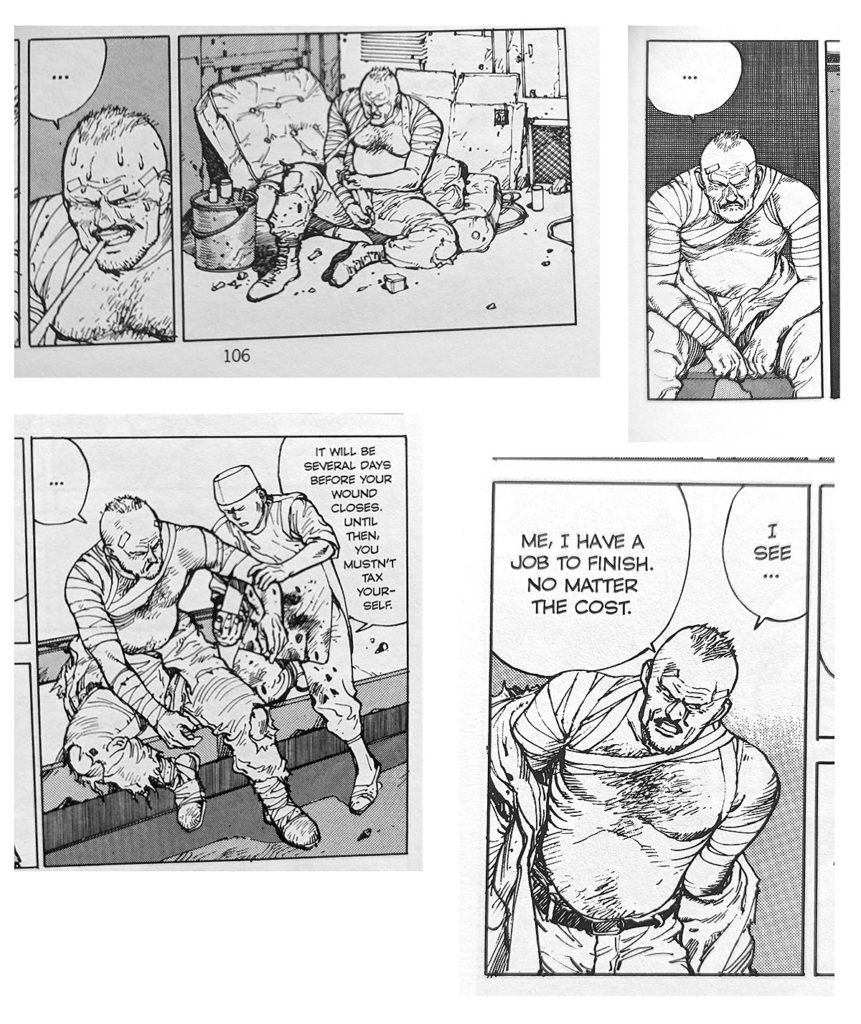
25:53 Did they name the aircraft carrier? I don’t think they did, and the AKIRA wiki doesn’t seem to mention it either.
Should note that we didn’t REALLY talk about it, but there’s a gorgeous multi-chapter battle sequence on the aircraft carrier this volume that is one of the most stunning fight scenes I’ve ever seen in comics.
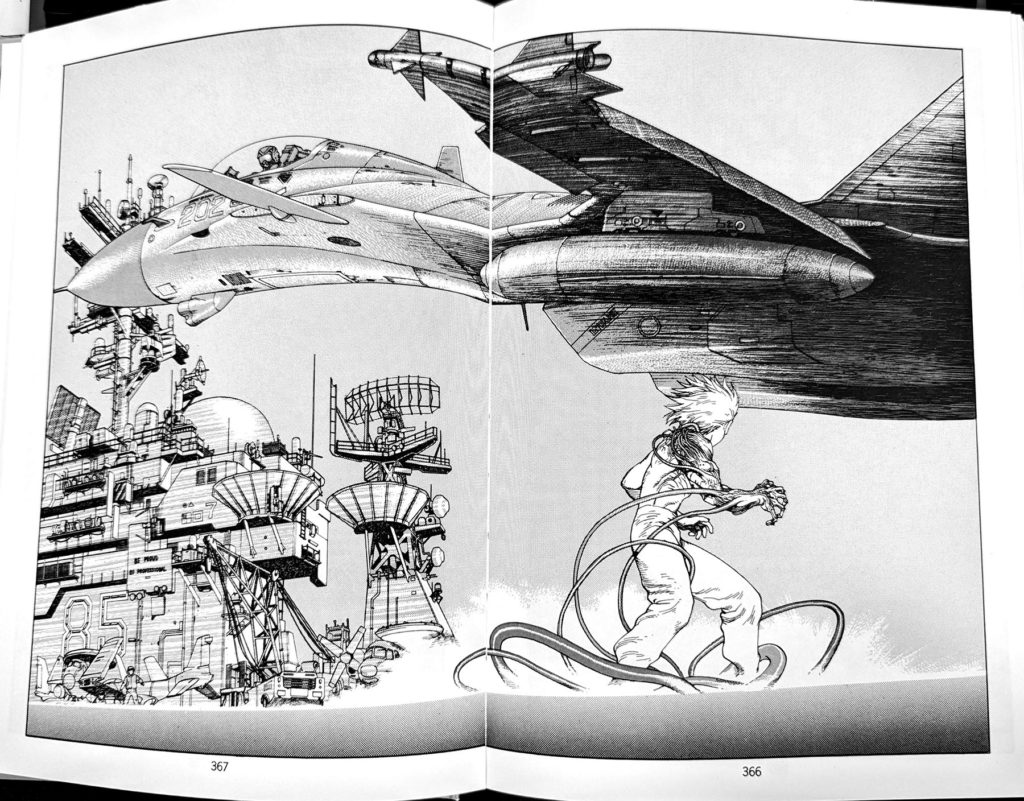
26:44 Ah sorry, I’m a bad Scott Pilgrim fan. It’s actually Todd Ingram, the vegan, who blew a hole in the moon with his vegan psychic powers.
David also mentions that Chairface in The Tick was interrupted while writing his name on the moon.
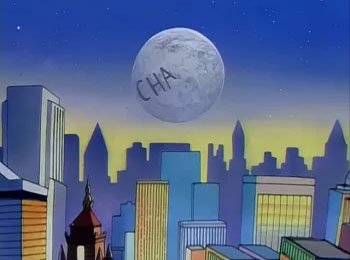
And the defacement of the moon has become a trope. Officially.
I did re-read the book to do these show notes, and Deb is right in saying that the only word that Akira says this volume is “MOON.”
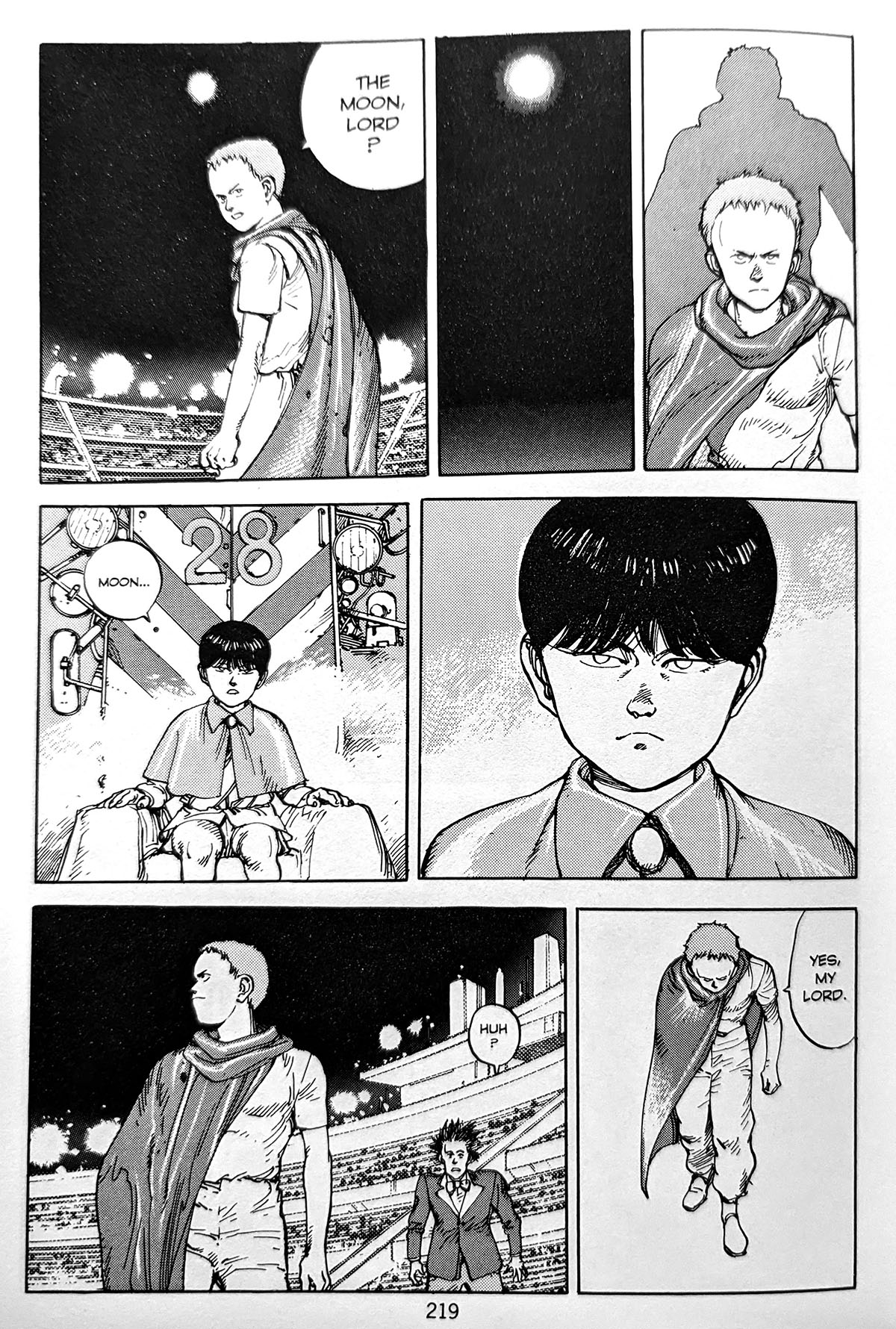
A boy of few words. That’s what happens when your personality is erased, I guess.
30:22 Deb mentions the horror overtones in Tetsuo’s approach to the scientists on Page 169. Tetsuo’s a Michael Myers (from classic slasher flick series Halloween) type character: unstoppable, and incomprehensible.
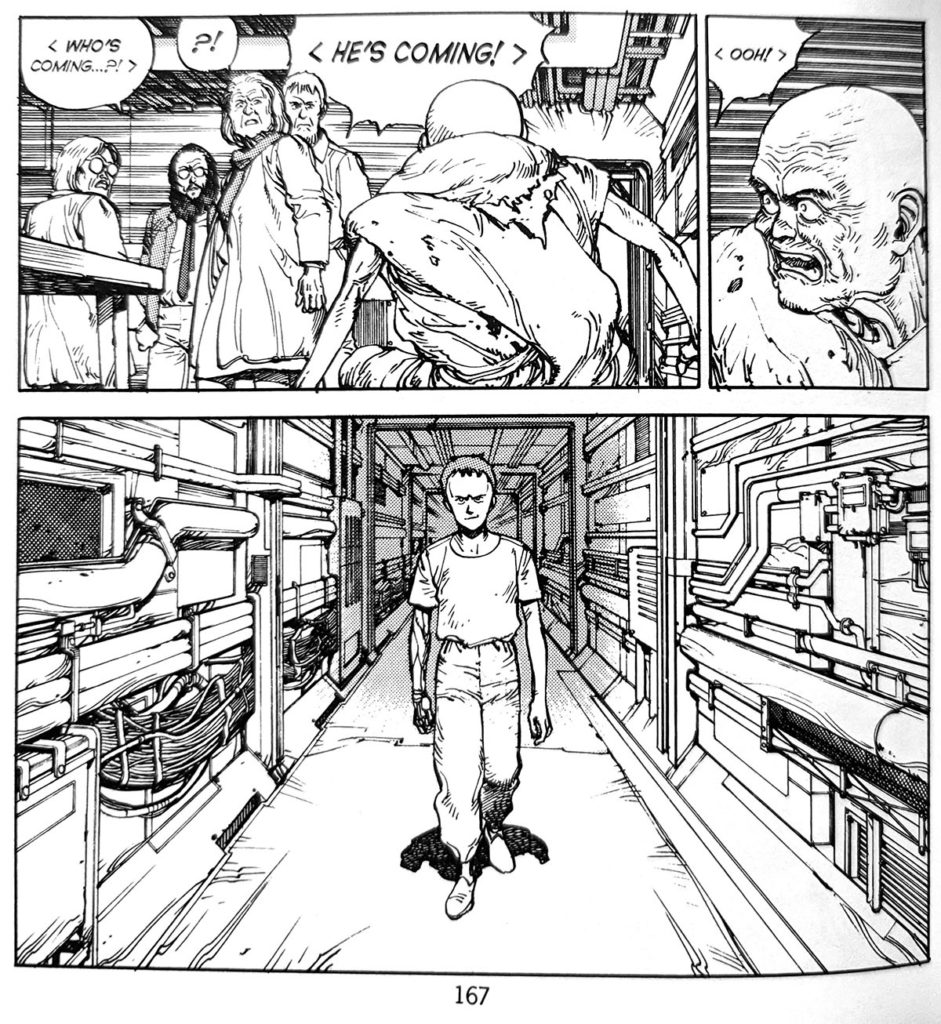
Here’s what I meant by the “They’re in the room…!” bit from Aliens.
33:25 Yeah, it really feels like Otomo referenced A Clockwork Orange director Stanley Kubrick for the Russian scientist on Page 17.
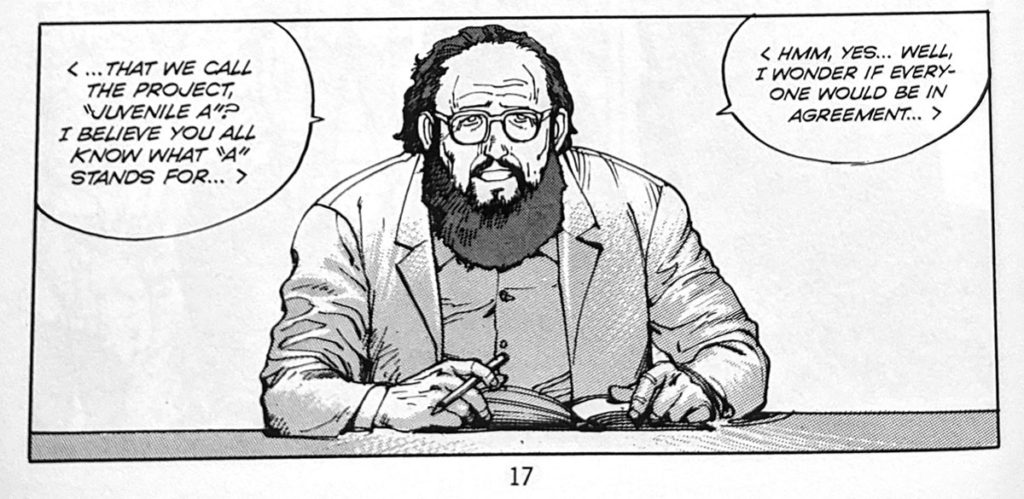

37:33 We talk about how the detailed backgrounds come and go in Otomo’s work, where backgrounds are dropped out sometimes to create a focus on the characters, like this two-page spread with almost no background 182-183.
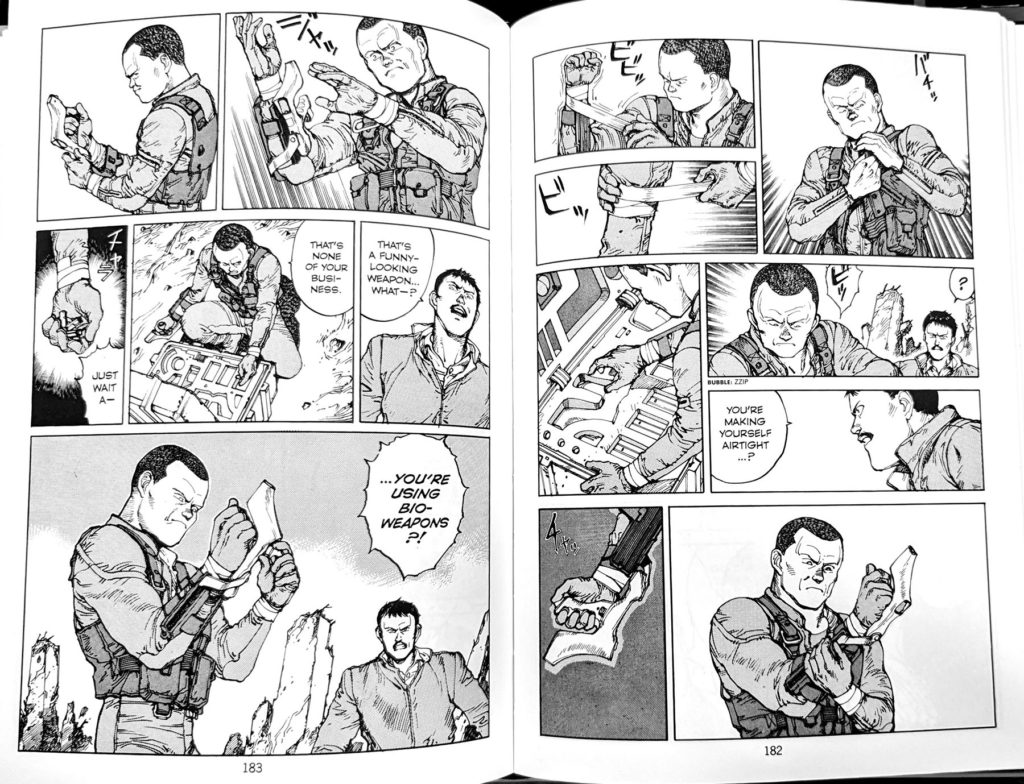
But then a few pages later on page 186, the backgrounds come roaring back and the shantytown is so intensely detailed for such a small panel…
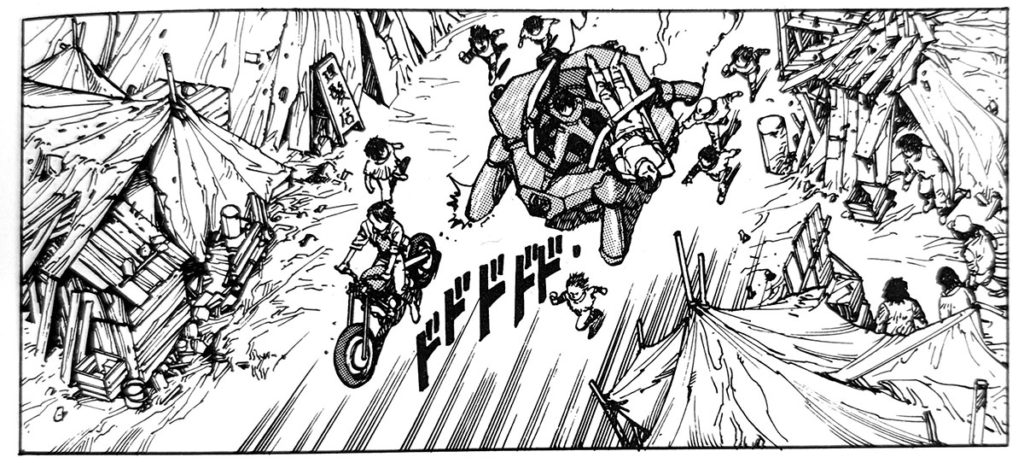
To say nothing of the double-page-spread of the Olympic Stadium a little later.
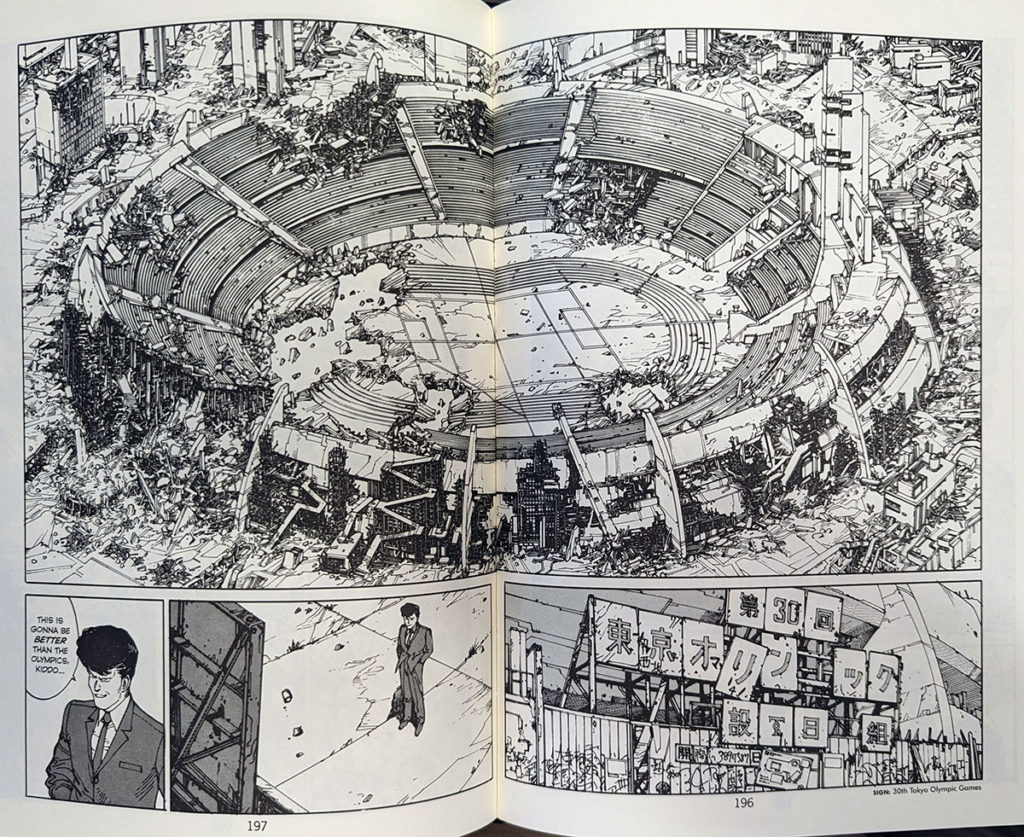
Or even just this single panel on a page with 4 other panels, like, he didn’t need to go this hard.
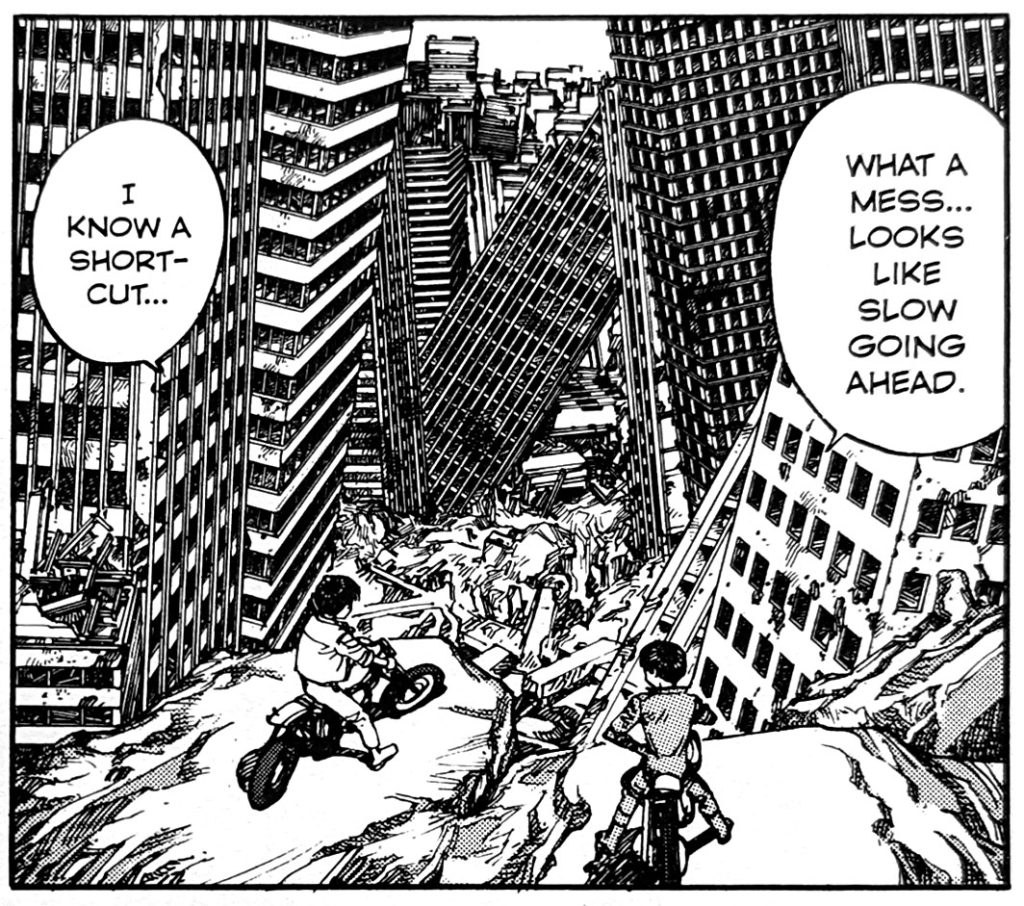
[DEB:] It’s worth noting that Otomo didn’t draw all of these incredible scenes by himself — he had an incredible staff who did a lot of the heavy lifting (so to speak). Go follow Satoshi Takabakate on X/Twitter — he’s posting some great pics from his work on AKIRA there at @st_nomad:

Or like, the fact that Joker’s headquarters is in an abandoned love hotel. Otomo and his team included some VERY love hotel style floor tiles just for shits and giggles. Like…
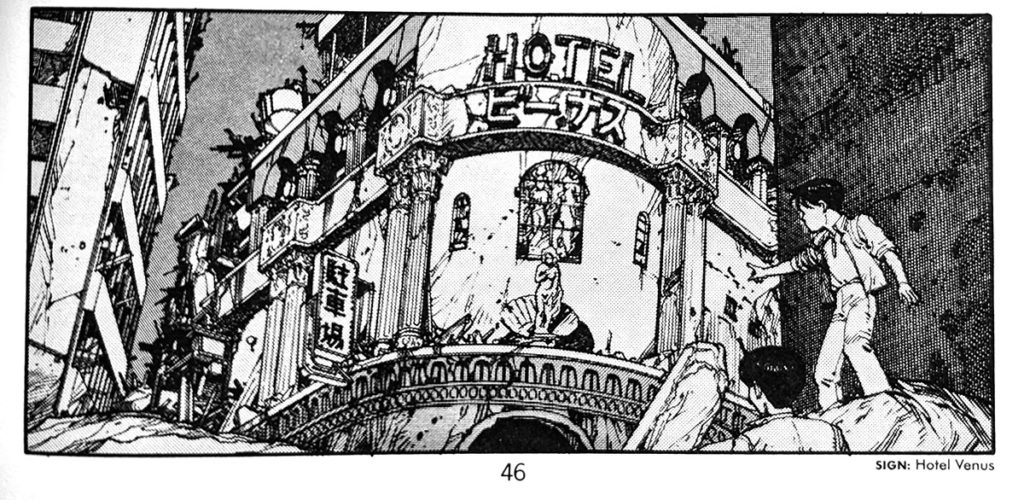
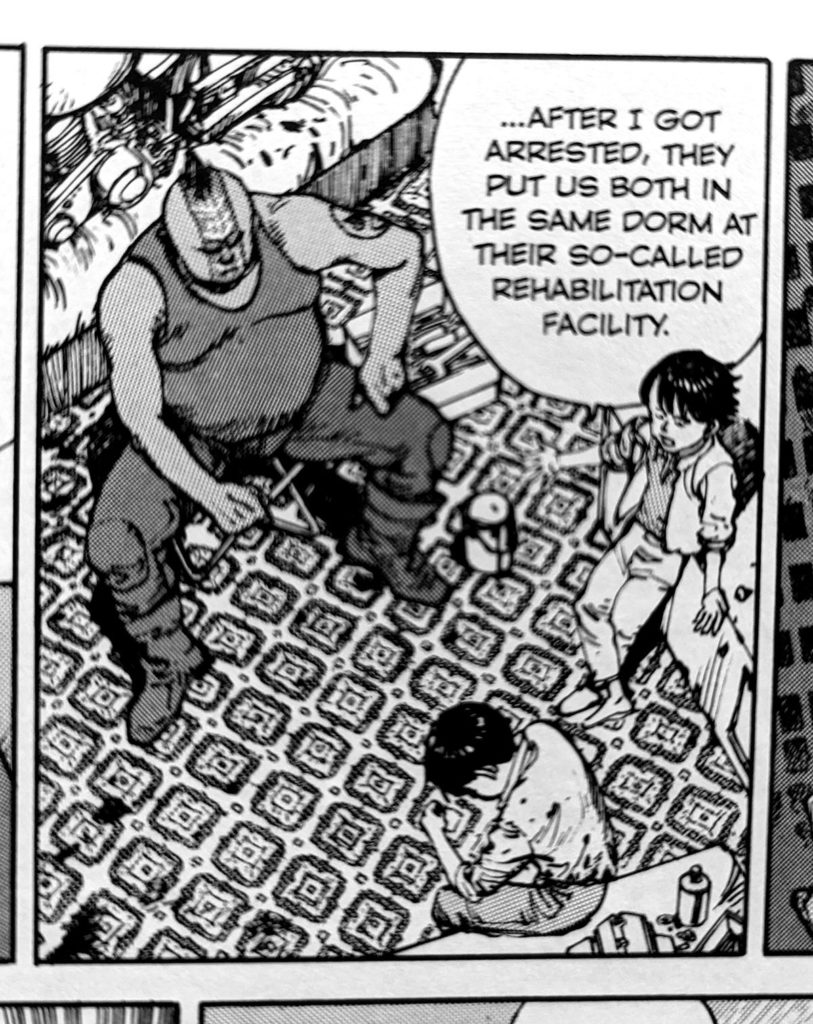
39:04 Deb mentions that these crowd scenes from the Hayao Miyazaki-directed film The Wind Rises, set just after the great Tokyo earthquake, were all animated by hand. This sequence took 13 months to animate, here it is on Facebook video, the only place I could find it: https://www.facebook.com/watch/?v=2083576688697656
This information comes from an NHK documentary, “10 Years with Hayao Miyazaki.” That’s up for watching for free on the NHK website.
42:00 We take a few minutes to talk about sound effects in the bike sequence from page 242 to 247. There are sound effects incorporated into the art, behind some pieces, and given volume, with shadows, layers, etc. It’s really accomplished lettering.
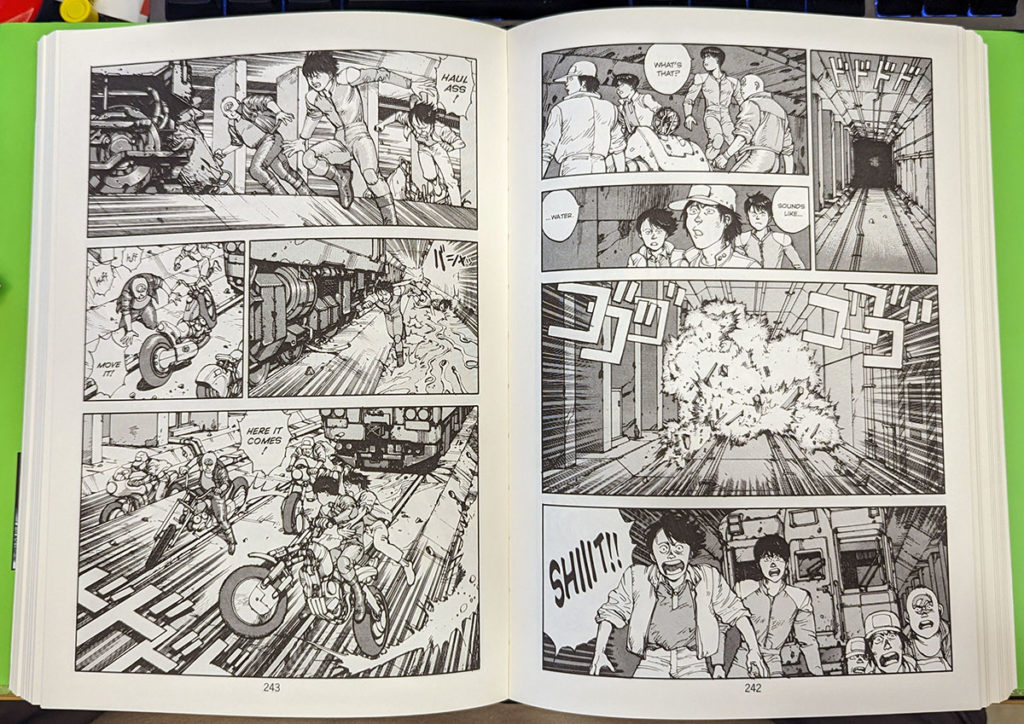
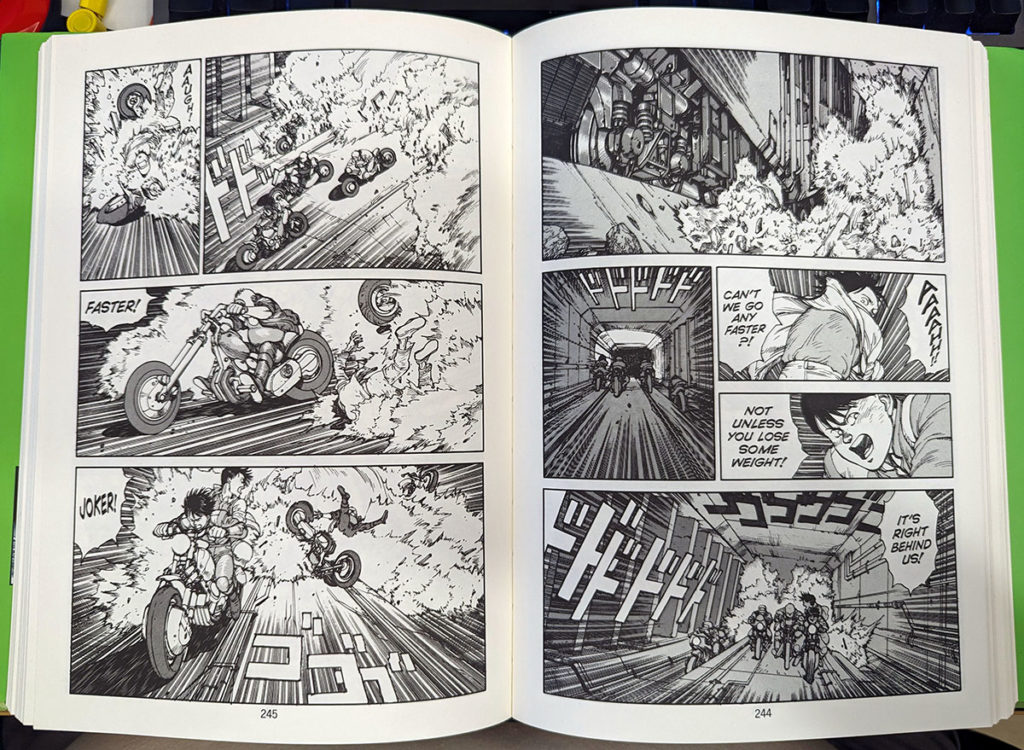
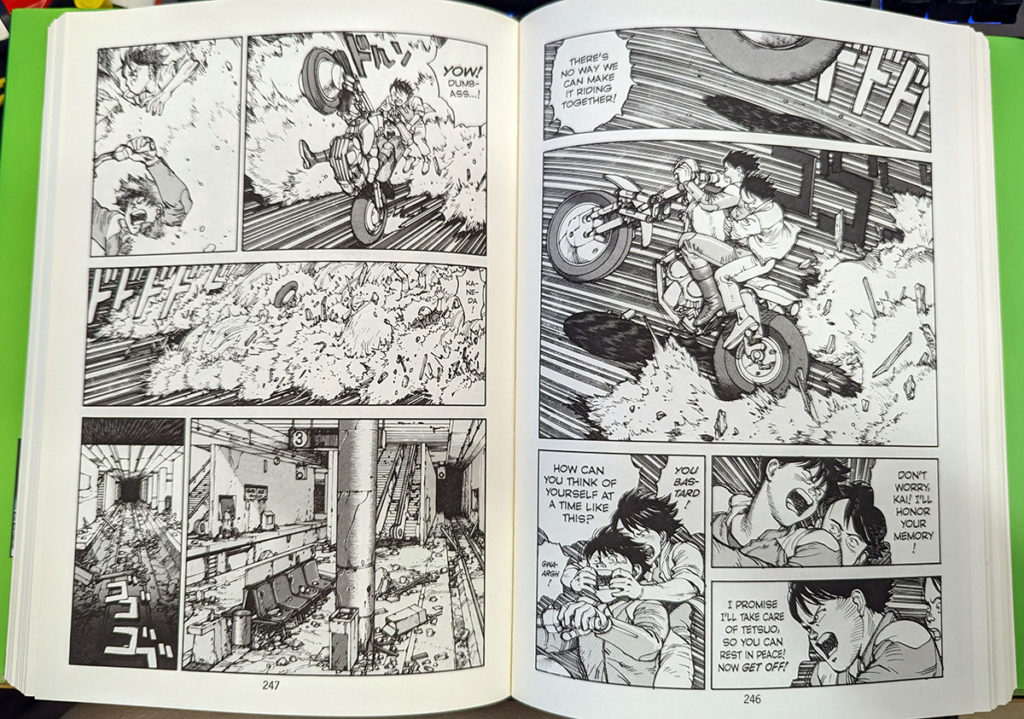
There really is an incredible level of care in this story, and other than the English lettering, all of it is done by hand, including the background words and lettering. It’s so strange to me, how little actual writing/lettering is in comic books, considering their medium.
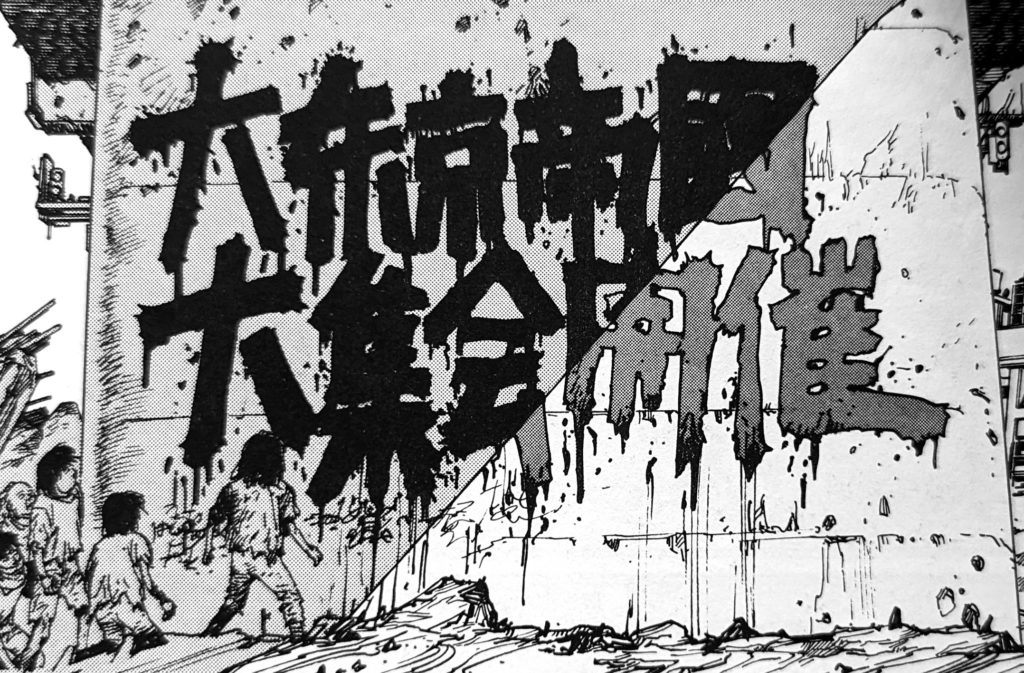
43:35 David asks if the kid who wets himself on page 199 is a direct reference to the manga Screw Style (Nejishiki) by Yoshiharu Tsuge. I don’t recognize it, but may be it is? Sound off in the comments.
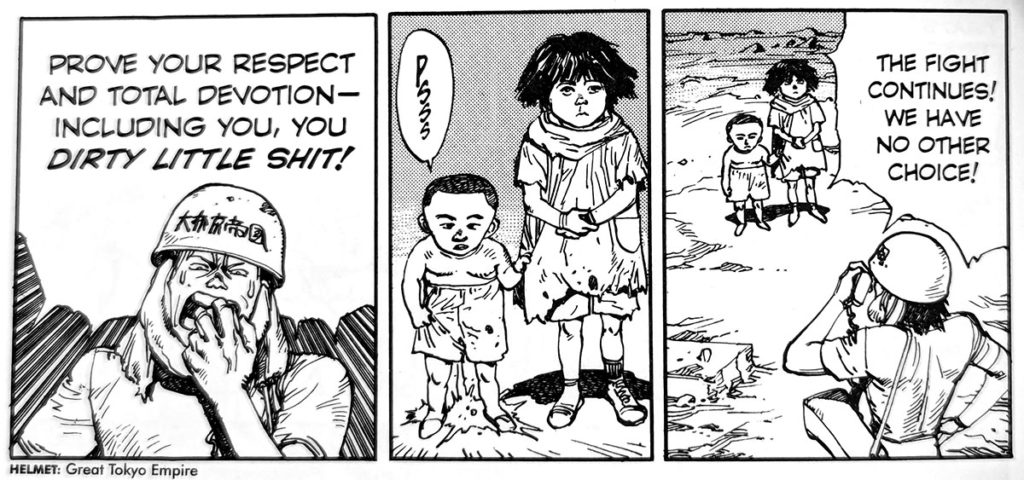
Speaking of David spotting the details, in a segment we alternately call “Little Brothers” and “Sweat the Small Stuff” but maybe we should’ve called it “Brothers Eye” (like from a Grant Morrison comic), David notices that a character on page 330 is wearing a cap that’s… let’s say it’s an homage, to the antagonist from Domu, the sci-fi/action story set in a Japanese housing project that Otomo completed before starting AKIRA. Domu was published in English by Dark Horse and is currently out of print.
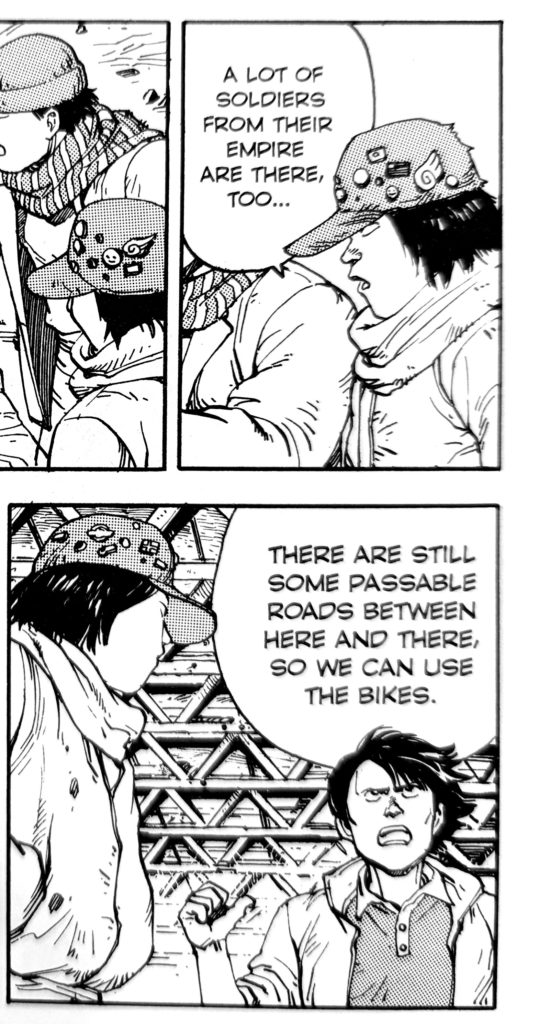
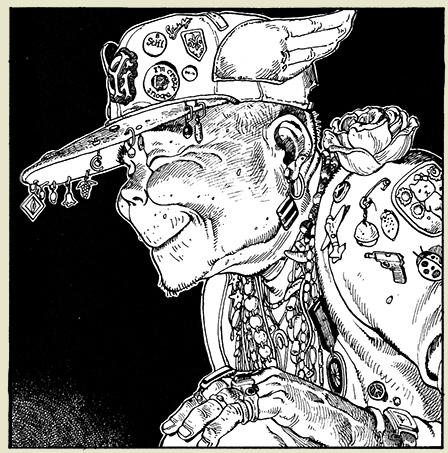
Speaking of Domu, David mentions that musician Lupe Fiasco’s Food & Liquor album cover is based on a well-known piece of art from Otomo’s Domu. Here they are side-by-side.
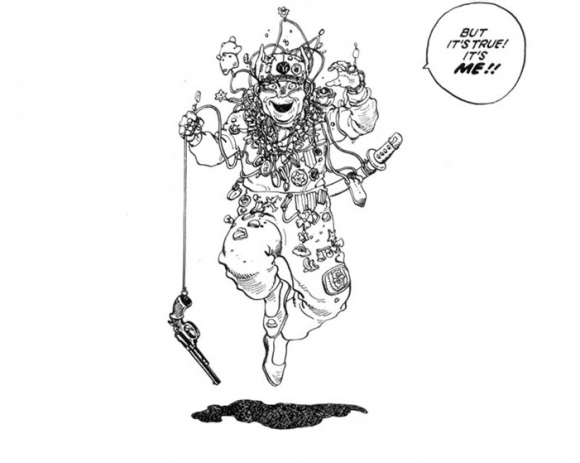

47:05 I was reading the show notes of Mangasplaining Episode #1: AKIRA by Katsuhiro Otomo to get ready for writing these. In that, I mention that they’ve announced these new “Katsuhiro Otomo Complete Works” books, which collect all of Otomo’s manga in roughly chronological order. I was hoping that they would be announced for release in English soon! That was in 2021. They have not yet been announced for publication in English. They’ve released 10 volumes (of at least 25) in Japan.
Here’s the website, in case you’re keeping track at home: https://otomo-complete.com/
I bring this up because David mentions the promotional video for these titles that was released, showing the care and attention to detail that’s going into them. Hand-inserting promotional material, hand-wrapping them in dust-jackets, hand inserting them in little bags to keep them minty for sale.
This leads into a 15-minute conversation about printing and publishing and economies of scale and all that, it’s all really interesting if you’re into that sort of thing, or deadly boring if you came to the podcast to hear people talking about AKIRA. Whoops! Thanks for indulging us.
59:00 On page 55, Chip likes the revelation of what he calls “Chekhov’s cool bike,” a nod to the narrative principle of “Chekhov’s Gun.”
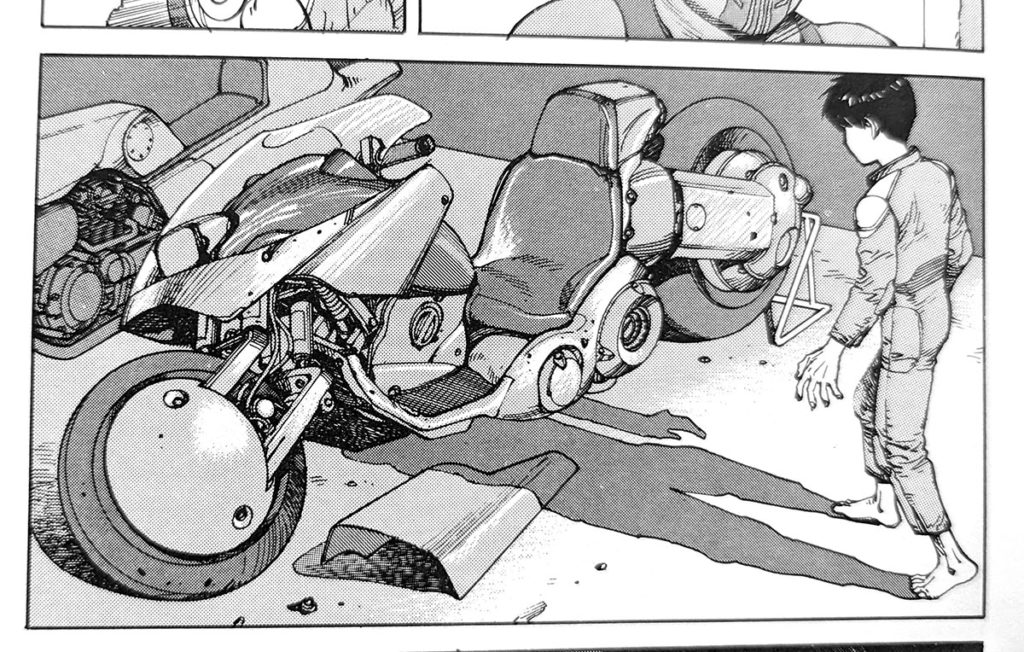
Which is to say, we will be seeing this bike again. And if you’d seen the promos for the movies when this chapter came out, or even seen the actual film since I think this chapter dropped after the premiere, then this was probably INCREDIBLY exciting.
[DEB:] Once in a while, I see photos online of people creating a life-sized version of the AKIRA motorcycle… You can see this eye-popping example on DesignBoom:

59:50 Chip liked that ‘blowing a hole in the moon’ was the ‘this time he’s gone too far!’ moment for Kaneda. I point out that sometimes Otomo pushes his character face drawings way more realistic than cartoony, and it’s an interesting effect.
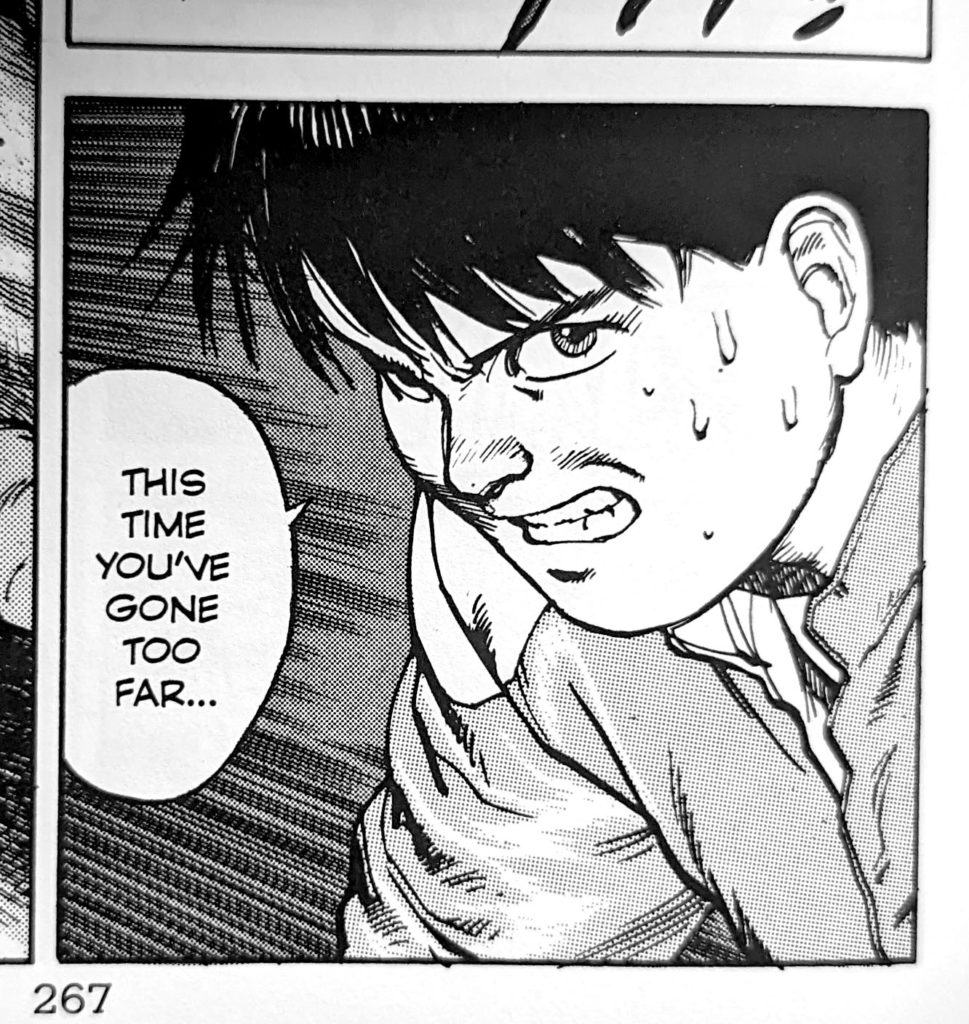
1:02:00 David mentions that he actually owns the color guide created by Steve Oliff for Page 151.
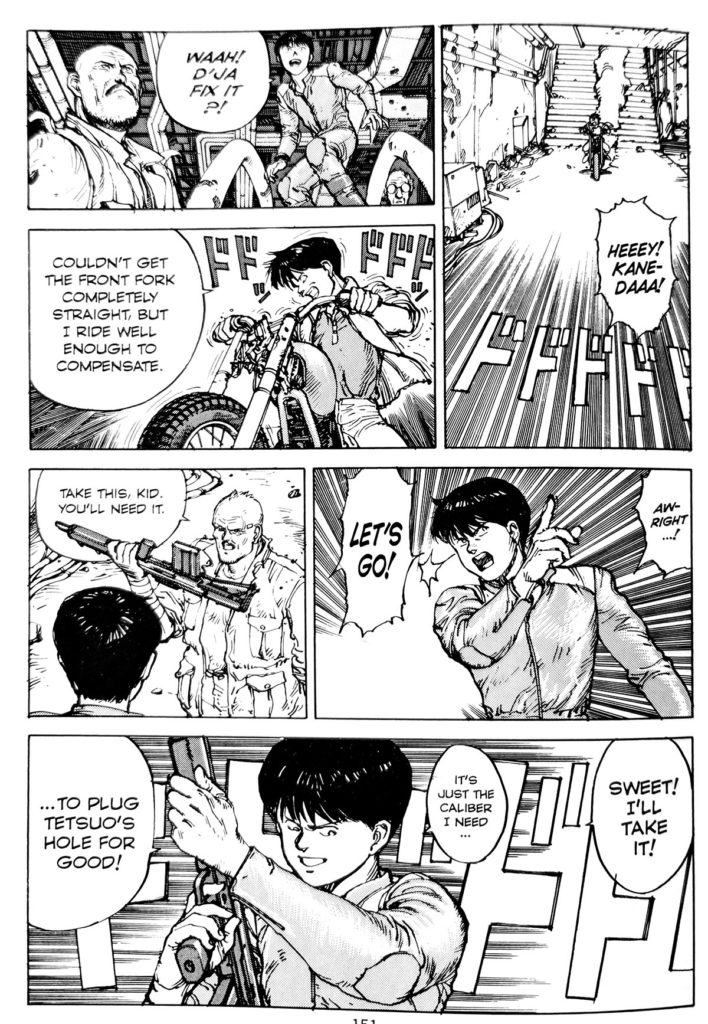
You can get your own AKIRA color guides pages at the Felix Comic Art website!
And that’s where we’ll end the main part of this episode..!
1:12:47: THE BREAK
And now it’s time for Shout-Outs!
CHRISTOPHER shouts-out the short film Kiss of the Rabbit God, and you can watch that right here:
DAVID shouts-out the new season (Season 16!) of It’s Always Sunny In Philadelphia.
CHIP re-affirms David’s shout-out and also really likes What We Do In The Shadows which he also recommends.
DEB shouts-out Hajime no Ippo by George (Joji) Morikawa on K-Manga! The first five chapters are free to read, and up through chapter 109 has been translated and published.
https://kmanga.kodansha.com/title/10071/episode/347587
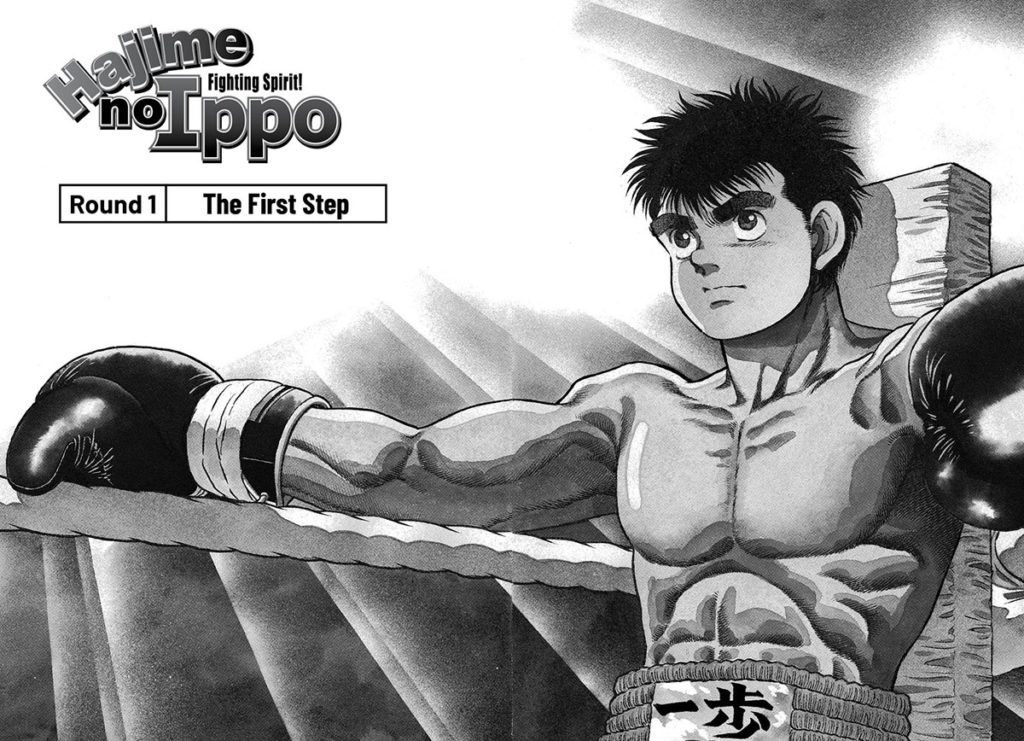
And that’s this week in Mangasplaining! This episode is also available wherever you get your podcasts, so please subscribe and leave a review, so others can discover our show.
Also, if you’d like to get the latest episode delivered straight to your inbox along with exclusive interviews, articles and new chapters of manga you can’t read anywhere else, subscribe to our Substack newsletter. See what you’re missing at Mangasplaining Extra!
Next week on Mangasplaining:
So this is the season finale… but we’ve got a wrap-up episode coming your way next week, and then a BONUS episode before we start Season 5! So come back in 7 days (or so) for more.
Thanks so much for listening! Please support your local comic and manga specialty shop when purchasing these books, and you can find one near you at comicshoplocator.com. You can also check your local library for print and digital lending options, they have TONS of manga! Finally, thanks to D.A.D.S. for their musical accompaniment for this episode.
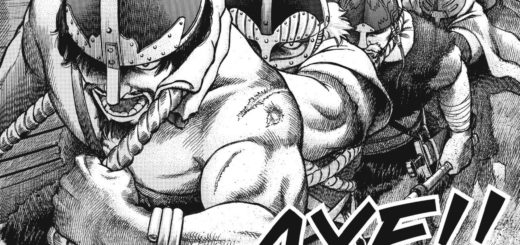
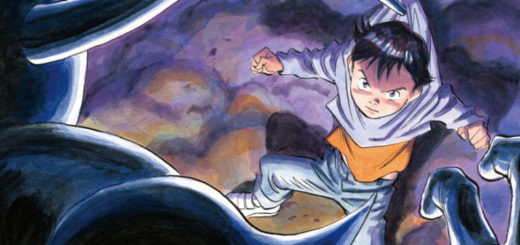
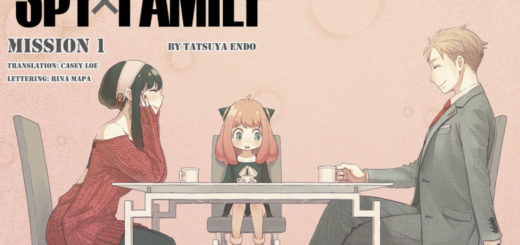
“The Chapter Breaks! We’ve talked about this a little bit before, but one of the things that’s so special about the AKIRA collections is that they’ve been re-edited to be read as one continuous volume. When this story was originally serialized in Kodansha’s Young manga magazine, each installment would contain between 16 and 20 pages, containing between two and four ‘scenes’ (depending on length) from the story. Sometimes they’d be really satisfying chunks! Sometimes it was whatever Otomo and the crew could get done in time.”
Maybe this is just another sign of me being a fuddy duddy purist, but… I don’t find it special when serialized manga (ie most manga) is re-edited to volume form to be read as one continuous volume. I admit it does seem to work mostly in Akira, but I can think of so many examples where it doesn’t work for me.
For example, I was so glad that Udon chose to adapt the Japanese Perfect Editions (I think that’s the name) of Rose of Versailles. I had previously read the manga in the French translation which was based on older Japanese editions where there is no break where the weekly instalments would begin and end. In the case of Rose, because it was weekly, each instalment was a short 15-20 pages, and usually ended in a mini cliffhanger. Reading with those breaks included as chapters made so much more sense than when I read them as one long volume where it seemed exhausting that every 15-20 pages there was a cliffhanger that would usually get immediately resolved… (Hagio’s Heart of Thomas which was also weekly–back when shojo still had weekly magazines–is similar and Fantagraphics do make it clear where each break is and while Thomas is not the melodrama Rose of V is, so doesn’t have those action cliffhangers, again, it reads much better if one is aware of where each “episode” should conclude.)
It also, honestly, makes it easier to find places to take a break from a manga if you can’t read a volume in just one sitting.